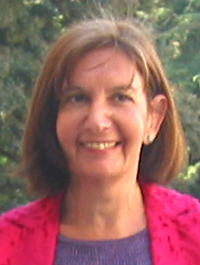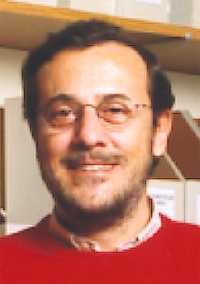![[Logo CIB]](/imagenes/logo_cib.jpg) CENTRO DE INVESTIGACIONES BIOLÓGICAS
CENTRO DE INVESTIGACIONES BIOLÓGICASDepartment of Cell and Developmental Biology
Molecular Biology of Chromosomes
Research Lines
![[Logo CIB]](/imagenes/logo_cib.jpg) CENTRO DE INVESTIGACIONES BIOLÓGICAS
CENTRO DE INVESTIGACIONES BIOLÓGICAS
Department of Cell and Developmental Biology
Molecular Biology of Chromosomes
Research Lines
![]()
 |
Research Subject: Initiation, Elongation, Blockage, Termination and Topology of DNA Replication. Responsible: Jorge Bernardo Schvartzman Blinder Our aim is to characterize the mechanics of DNA replication in chromosomes and extra-chromosomal elements. We use bacterial and yeast plasmids as simple experimental systems before moving to YACs (Yeast Artificial Chromosomes) and the complex chromosomes of higher eukaryotes. Our interest is not focussed only in the identification of origins, replication fork barriers and termini, but also in the topological changes that occur during DNA replication. In this way we hope to improve our knowledge on the structure and function of eukaryotic chromosomes. Our long-term goal is to build up artificial chromosomes that might be used as stable vectors to transform plant and mammalian cells in order to allow gene therapy in these organisms. To know more about our latter achievements in this field click here. |
 |
Research Subject: Identification and Cloning of Genes Involved in Erythroid Differentiation.Responsible: Dora Beatriz Krimer Smunis We use MEL (murine erythroleukemia) cells as a model system to identify genes involved in cell differentiation. MEL cells derive from erythroid precursors that have their differentiation pathway blocked. They can be induced to re-initiate differentiation by a number of treatments including hexamethylenbisacetamide (HMBA). Our main goal is to identify genes that are activated or repressed during the early steps of differentiation. To know more about our latter achievements in this field click here. |
 |
Research Subject: DNA Replication Arrest in Eukaryotes and its Relationship with Dynamic Mutations.Responsible: Pablo Hernández Valenzuela In eukaryotic cells, the deleterious effects of collision between transcription and replication are avoided by the presence of polar replication barriers. These barriers prevent replication complexes moving in the direction opposite to transcription to enter into transcriptional units. This is the case of the genes coding for ribosomal RNA (rDNA), where there is a temporal coincidence between transcription and replication. Our results indicate that this polar blockage is mediated by binding proteins that specifically recognize DNA sequences located in the barrier, arresting the replisome probably by inhibiting DNA helicase activity. In the mouse rDNA, replication seems to be blocked by the TTF-1 factor. This factor is also involved in the termination of rRNA transcription by RNA polymerase I. Therefore, it is a system in which the same cis-acting and trans-acting factors are able to arrest transcription approaching from upstream and replication approaching from downstream, preventing head-on collision of both machineries. We are characterizing this mechanism by using Schizosaccharomyces pombe as model. A new type of mutations, known as dynamic mutations, is responsible for a series of human hereditary diseases. These mutations consist in the expansion of the copy number of trinucleotide repeats located in some genes. This expansion alters the expression of the affected gene. Our objective is to determine the role that DNA replication plays in the formation of these mutations. We have found that in simple model systems these trinucleotide repeats block replication complex movement in an orientation dependent manner. Our results indicate that replication slippage of the nascent strand takes place in the arrested replication forks leading to the expansion of the trinucleotide repeats. |
| Author: Jorge Bernardo
Schvartzman Blinder Madrid, November 2003 |
Docmaster: Sonia
Centeno Madrid, 29 September 1999 |